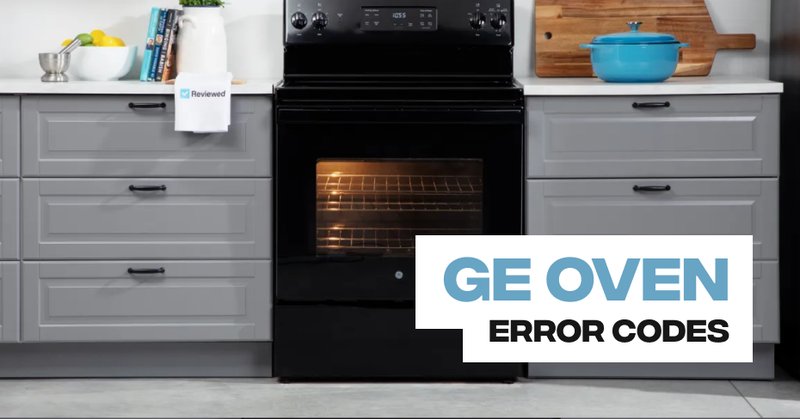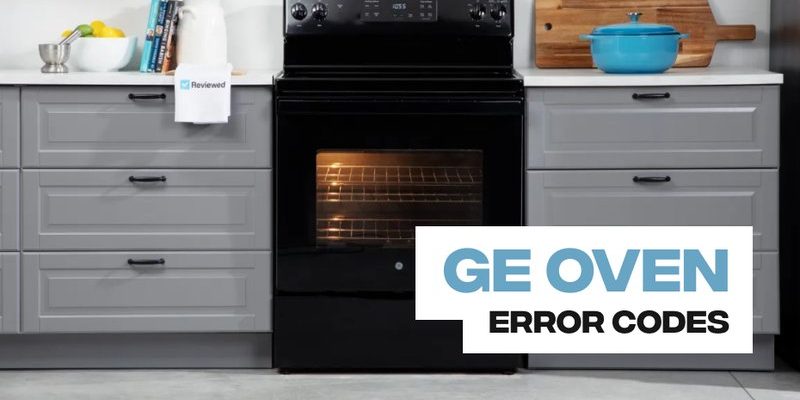
The F2 error code on a GE oven or range can be quite perplexing, especially if you’re not tech-savvy. In simple terms, this code indicates that your oven has detected it’s overheating. You might think of it as your oven’s way of saying, “Hey, it’s getting a bit too hot in here!” Just like how a smoke alarm warns you about smoke, the F2 code alerts you to abnormal temperature conditions. It’s a safety mechanism to prevent potential hazards, which is definitely a good thing. So, what exactly causes this overheating, and how can you fix it to get back to cooking without any hitches?
Understanding the F2 Error Code
The F2 error code specifically pertains to the oven’s ability to regulate its internal temperature. Think of the oven as a diligent baker who needs to keep everything at just the right temperature to get that perfect cookie. When something goes wrong with this process, the F2 error code pops up to alert you of an issue. Typically, this involves a problem with the temperature sensor or the oven’s control board.
You see, inside every oven, there is a temperature sensor that acts like a thermometer. It tells the oven to stay at the temperature you’ve set. If this sensor malfunctions or sends inaccurate readings to the control board, the oven might think it’s hotter than it actually is, or vice versa. Imagine trying to bake a cake when your recipe is lying to you about the oven’s warmth! The result might be underbaked or burnt, and nobody wants that.
In addition to issues with the sensor, the control board itself might be the culprit. It’s like the brain of your oven, interpreting signals and making adjustments. If it becomes faulty, it might not process the sensor’s information correctly, leading to an F2 alert. Thankfully, by understanding what triggers this error, you can take the necessary steps to address it and restore your oven’s functionality.
Diagnosing the Problem
Now, you might be wondering how to diagnose the exact cause of this error code. Don’t worry, it’s simpler than you might think. First, start by checking the temperature sensor. It’s usually located towards the back inside of the oven. Just like how a feverish child uses a thermometer, a multimeter can check whether your sensor is working correctly. Below a certain resistance level, the multimeter reading will confirm if the sensor is defective.
If the sensor checks out, then the next place to look is the control board. This step is a bit trickier because the control board has multiple connections. It’s like a sophisticated wiring system in a house. An electrician would examine it for shorts or damages. For most people, this part might require a technician who has the right tools and expertise to safely open and inspect the control board.
Another possible cause could be a fault in the oven’s cooling system. If the vent fans are not operating correctly, the oven might overheat, causing the F2 error code to pop up. Ensuring that the fans are clear of obstructions and that they run smoothly might resolve the issue without the need for sensor or control board repairs.
Troubleshooting and Fixing the F2 Error
When it comes to fixing the F2 error code, having a game plan is crucial. Let’s walk through some steps you can take. Start by performing a simple reset. This might sound basic, but sometimes turning the oven off at the circuit breaker for a minute can clear minor glitches. It’s similar to rebooting a computer—sometimes, that’s all it takes to solve annoying tech issues.
If a reset doesn’t do the trick, you’ll need to check the components we talked about earlier. Replacing a faulty sensor is often a straightforward fix. Many homeowners find they can do it themselves with some patience and a few basic tools. However, if the control board needs replacing, you might be better off calling in a professional. Control board replacements can be complex and involve handling multiple small components.
In cases where a professional is needed, don’t hesitate to contact GE’s customer support or local appliance repair services. They’re like expert detectives for your oven, quick to pinpoint the issue and help ensure everything operates smoothly again. Remember, a safe and properly functioning oven is essential—both for your culinary creations and the safety of your home.
Preventing Future Errors
While dealing with an F2 error can seem daunting, preventing it from happening again is entirely within reach. The key is regular maintenance and being observant about how your oven performs. Treat your oven with care, much like you’d maintain a car or other appliance with routine check-ups to ensure its longevity.
Regularly clean your oven to ensure no buildup that could interfere with the sensors or other components. Think of it like maintaining a clean workspace—it’s much easier to spot small issues before they become big problems. Ensure that vents and fans are free from dirt and debris to allow for proper airflow, keeping your oven from overheating.
Additionally, periodically checking the oven’s functionality can help catch potential problems early. Run the oven at different temperatures occasionally, just like a road test, to ensure it’s heating and cooling appropriately. This proactive approach can save you the hassle of decoding error messages in the future.
Finally, stay informed by keeping the user manual handy. It’s a treasure trove of information specific to your appliance, providing guidance on setup, maintenance, and troubleshooting. With these tips, you can keep your oven in top shape and enjoy many more cooking adventures without the fear of unexpected interruptions.
